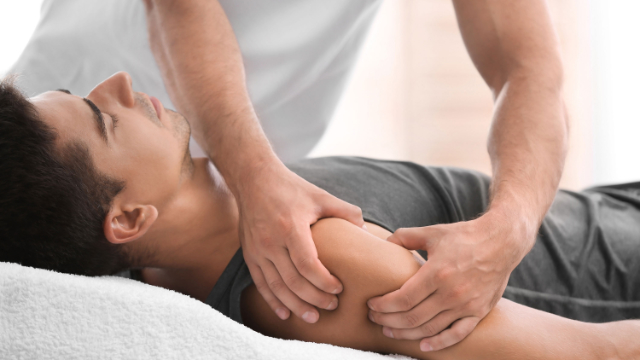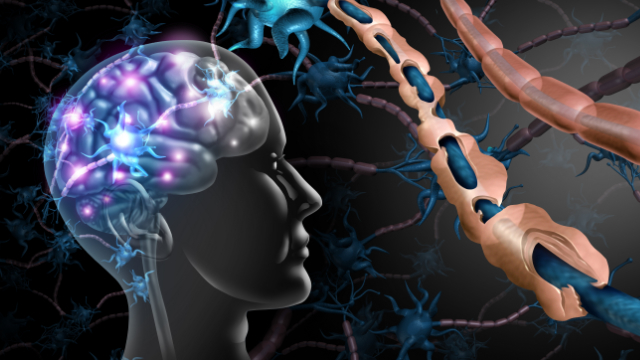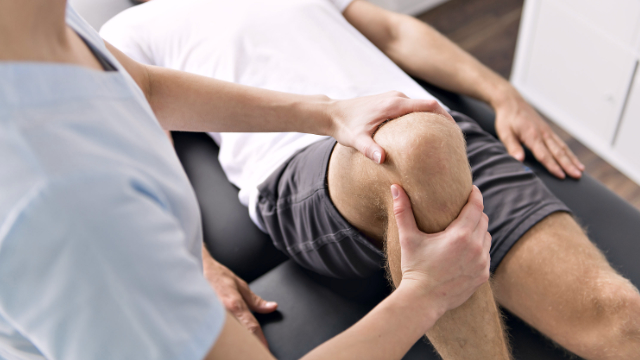
Most people just aren’t themselves when they can’t move properly. This rings especially true for shoulder pain, which is one of the most widespread complaints of the musculoskeletal system that people have.
Some studies estimate that up to 67% of the population will experience shoulder pain at some point in their lives, which makes sense when you think about how frequently we use our shoulders. Any time you reach, lift, push, or pull an object, you’re engaging your shoulder, meaning that they both get used quite frequently on a daily basis.
Shoulder pain can come about from a variety of reasons, but most cases are related to this repeated use that shoulders are put through every day. The shoulders are worked even more aggressively in individuals that do lots of overhead activities as part of their job or sport (like painters, carpenters, swimmers, and baseball and tennis players). Older adults deal with their own set of problems as well, as gradual damage to the structures of the shoulder from repeated use accumulates over time and eventually causes symptoms.
The result of this sustained damage is that a range of shoulder conditions can come about, with the majority involving the rotator cuff, a group of four muscles that surround and stabilize the shoulder joint. Issues like rotator cuff tendinitis—the most common shoulder injury—shoulder impingement, shoulder bursitis, and frozen shoulder each produce a unique set of symptoms, but they all interfere with one’s ability to perform many movements that involve the shoulder normally.
All painful conditions that affect the shoulder share something else in common: the best way to address them is through a course of physical therapy. Physical therapists are movement experts whose goal is to guide patients back to full strength and function with an exercise-based approach. For patients with any type of shoulder condition, a physical therapist will first focus on identifying the source of the pain, and then design a personalized treatment program that targets any areas of weakness or impairment and teaches patients how to regain their abilities through movement.
Typical physical therapy treatment programs for common shoulder conditions
Most treatment programs will involve some combination of pain—relieving interventions, flexibility and strengthening exercises, manual (hands-on) techniques administered by the physical therapist, and education on how to avoid future shoulder issues. But the specific approach used will vary depending on the condition present, its severity, and the patient’s abilities and goals. Below are a some of the interventions typically used for some of the most common shoulder conditions:
- Shoulder bursitis
- Stretching exercises like Codman’s pendulum swings and active range of motion exercises
- Strengthening exercises that target the scapular and core muscles
- Ultrasound and other pain—relieving modalities
- Posture education
- Rotator cuff tendinitis (shoulder tendinitis)
- Stretching and strengthening exercises, including external and internal rotation, forward flexion shoulder raises, pendulum exercises, and scapular squeezes
- Education on how to improve posture and avoid habits that will further aggravate the shoulder
- Shoulder impingement syndrome
- Stretching exercises
- Strengthening exercises that target the rotator cuff and scapular muscles
- Manual (hands-on) therapy, which typically includes soft—tissue massage
- Rotator cuff tear
- Passive treatment like ice, heat, and ultrasound to alleviate pain
- Strengthening exercises that target the pectoral and upper back muscles
- Education on how to avoid positions and movements that can further aggravate the shoulder, like sleeping on the side and carrying heavy loads
- Frozen shoulder
- Treatment for frozen shoulder depends on the current stage of the condition, from stage 1 (pre-freezing) to stage 2 (freezing), stage 3 (frozen), and stage 4 (thawing)
- The bulk of treatment consists of manual therapy and stretching and strengthening exercises, which increase in intensity with further stages of the condition; activity-specific training is usually added at stage 4
- Shoulder dislocation
- Immobilization of the shoulder for a period of time
- Stretching exercises (both active and passive) at first
- Strengthening and functional exercises as the shoulder regains mobility
- Calcific tendinitis
- Ice and/or heat
- Ultrasound
- Stretching and strengthening exercises for the rotator cuff muscles, which can decrease the pressure on the calcium deposits
- Extracorporeal shock wave therapy, a treatment that administers high frequency sound waves to the shoulder to break up calcium deposits
Many people will shrug off painful shoulder symptoms at first, but if left untreated, it can lead to additional pain, disability, decreased quality of life, time out from work, and frustration. This is why you should see a physical therapist at the first signs of shoulder pain to get on your way to a full recovery.








